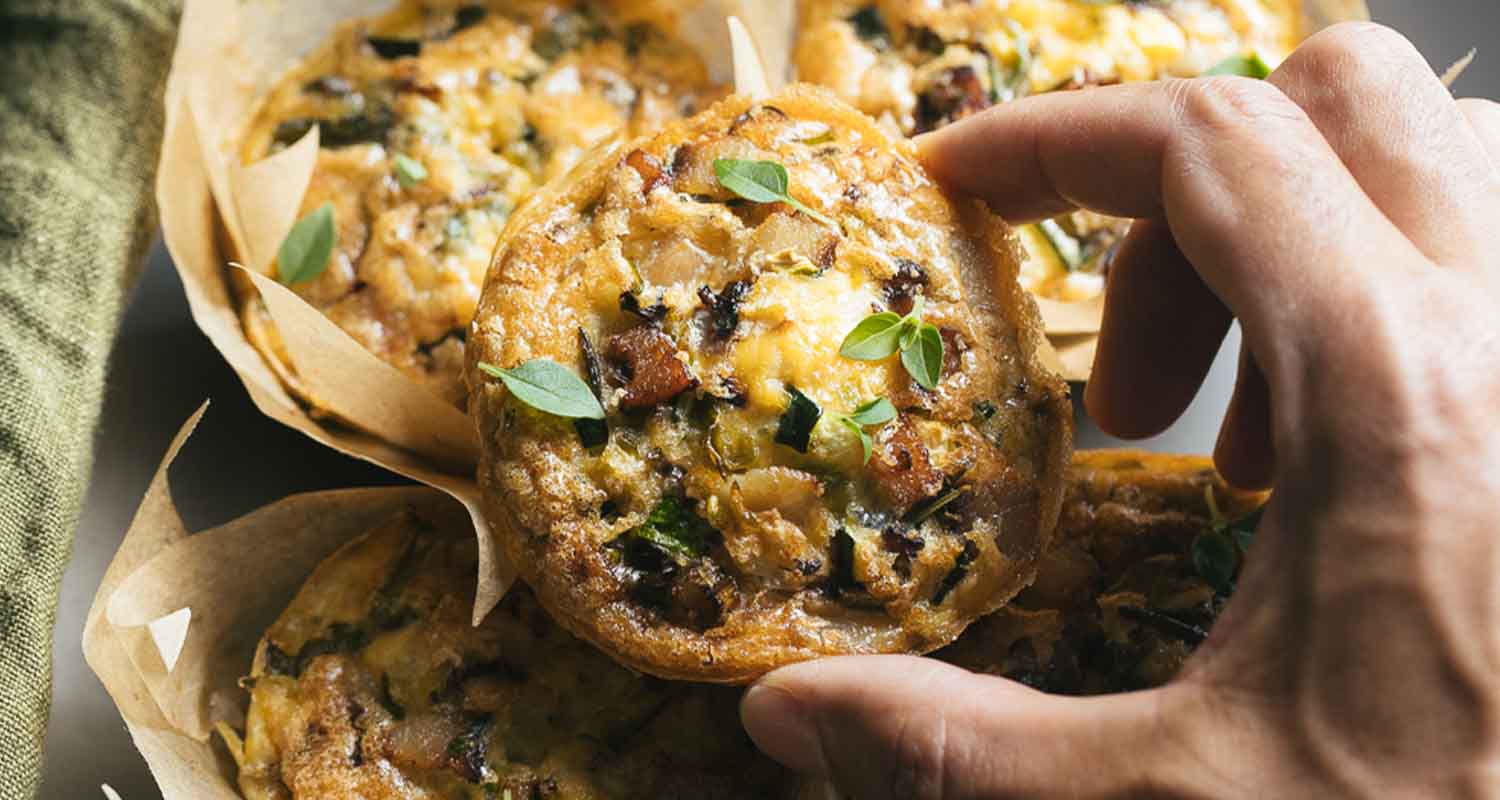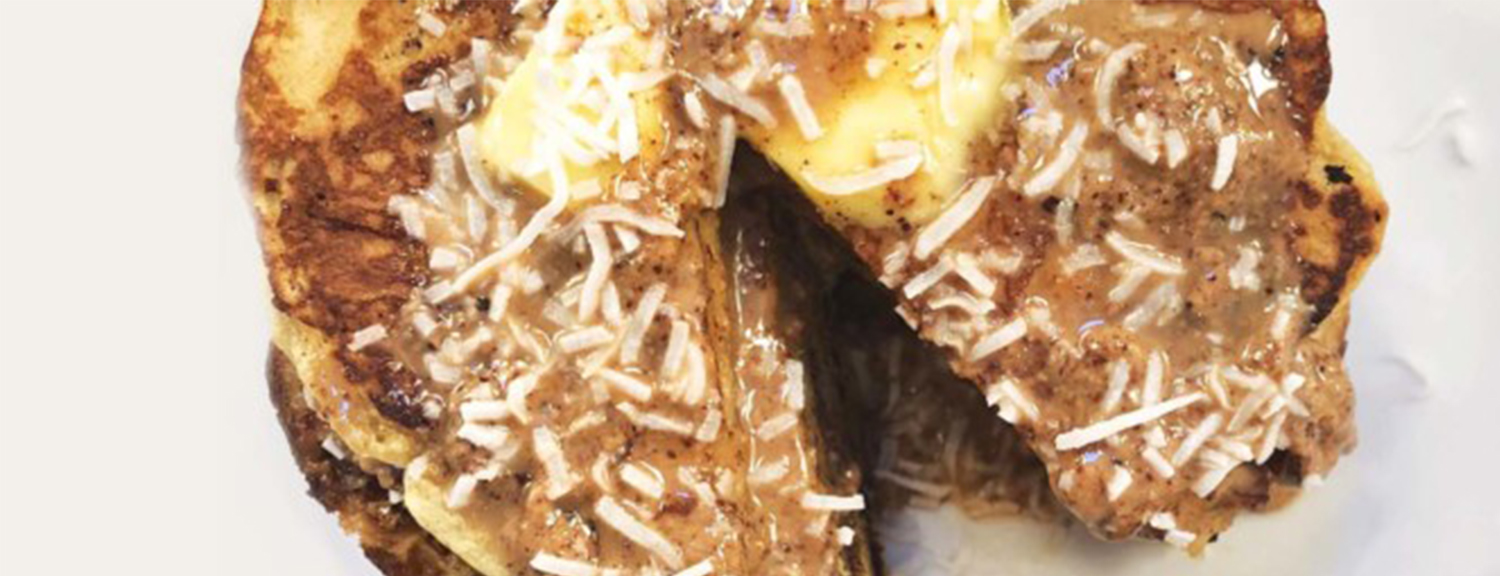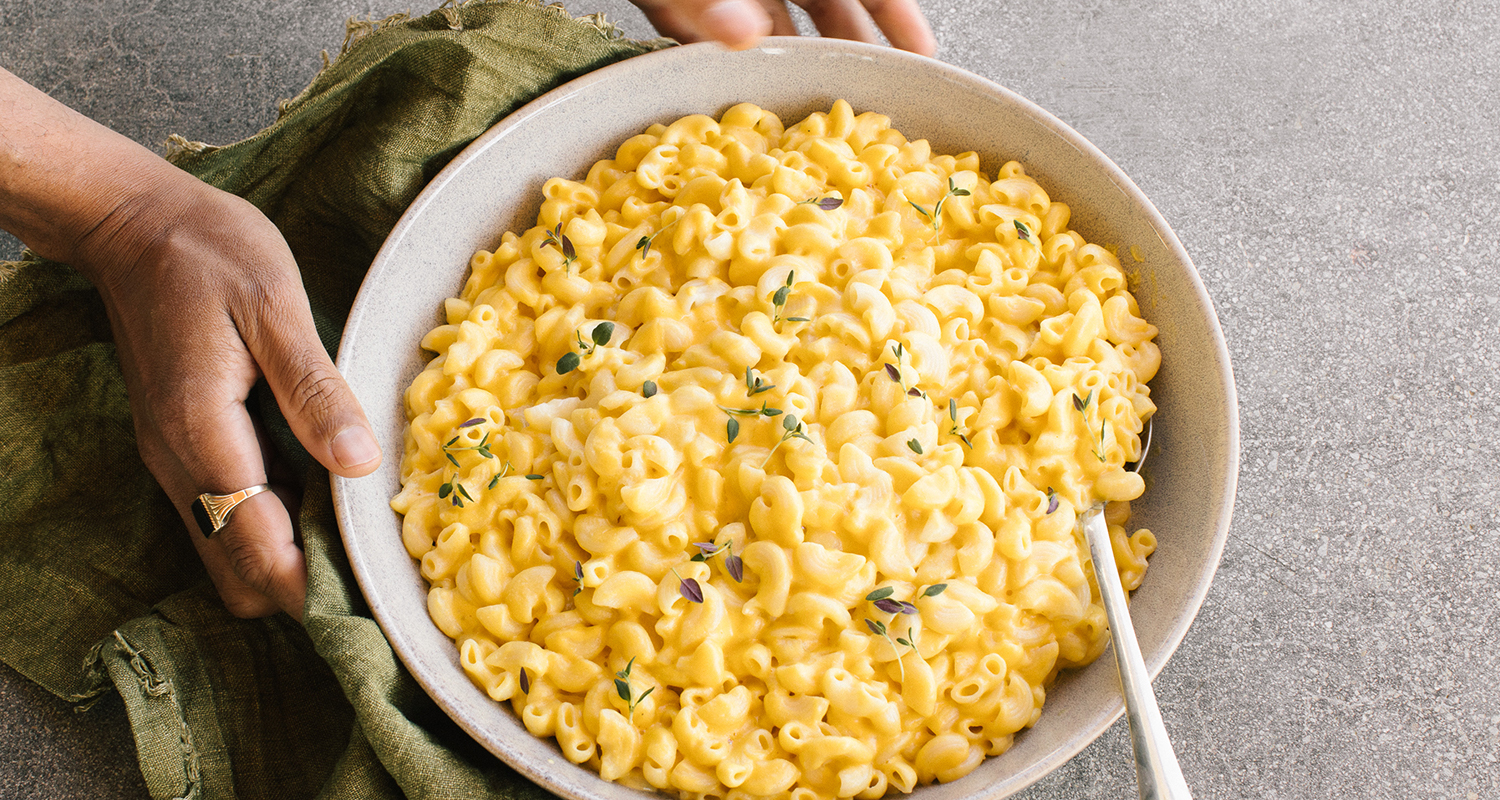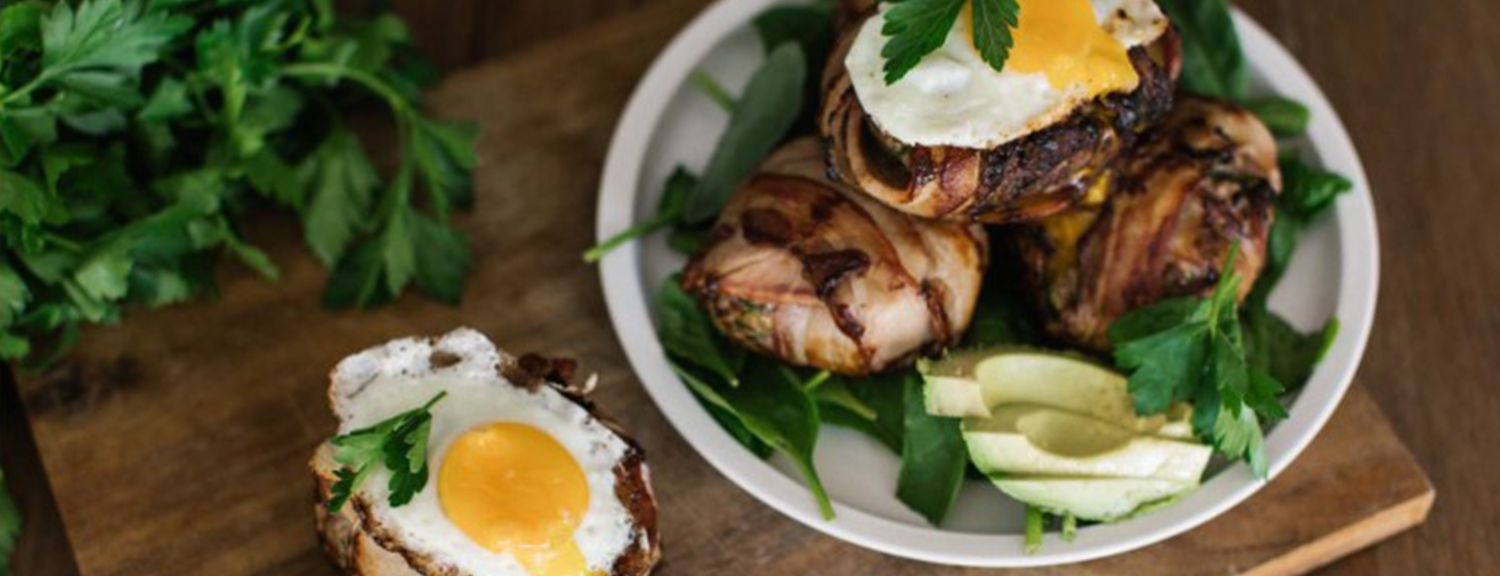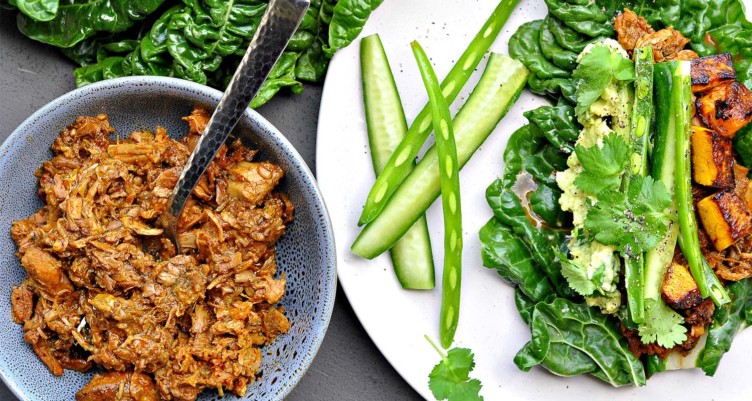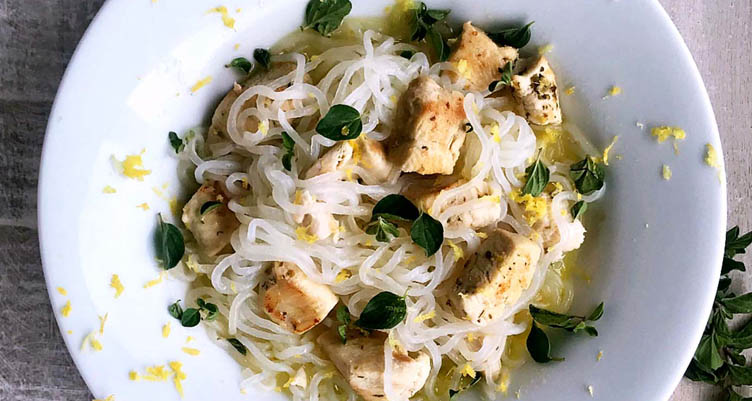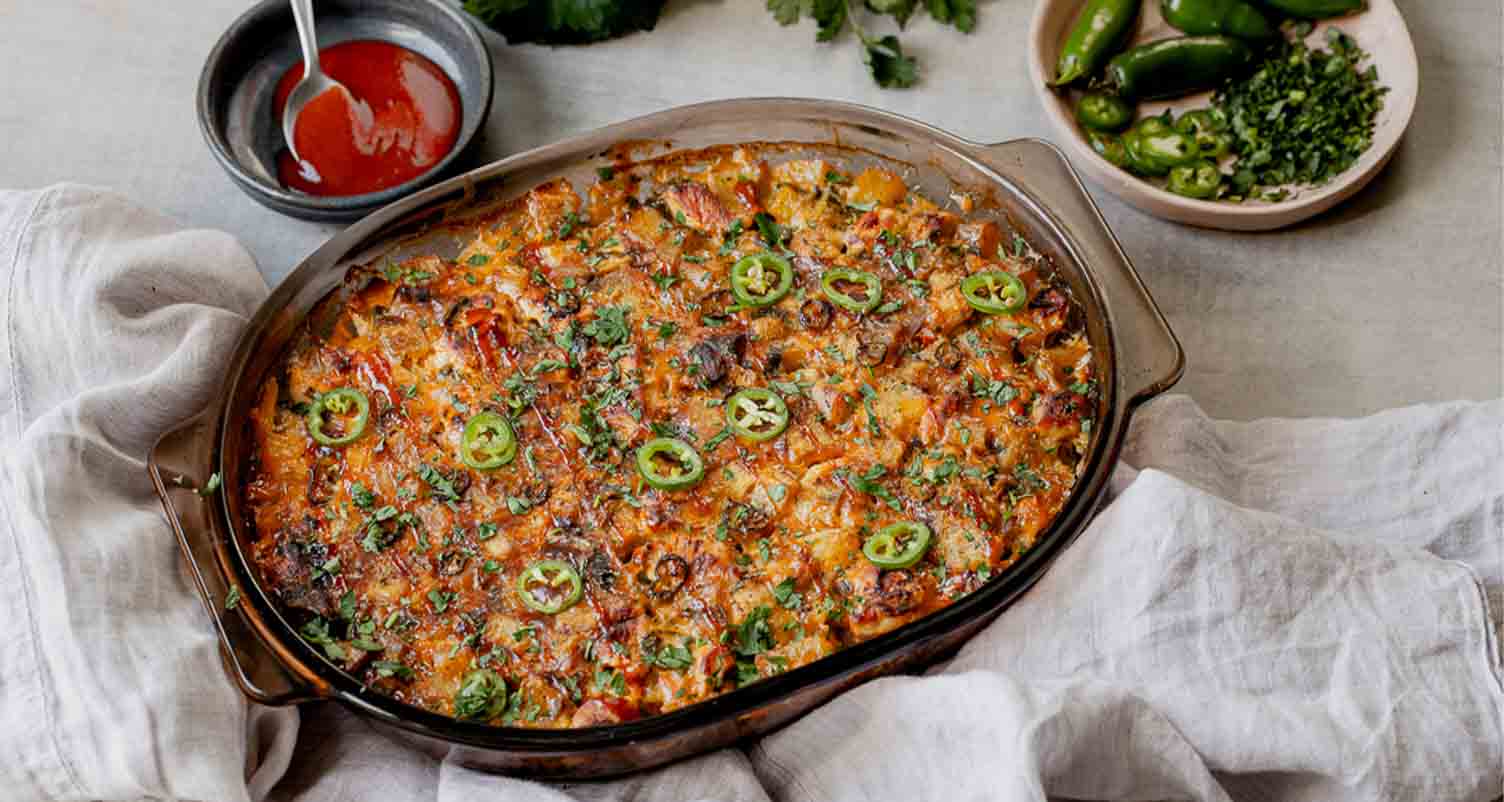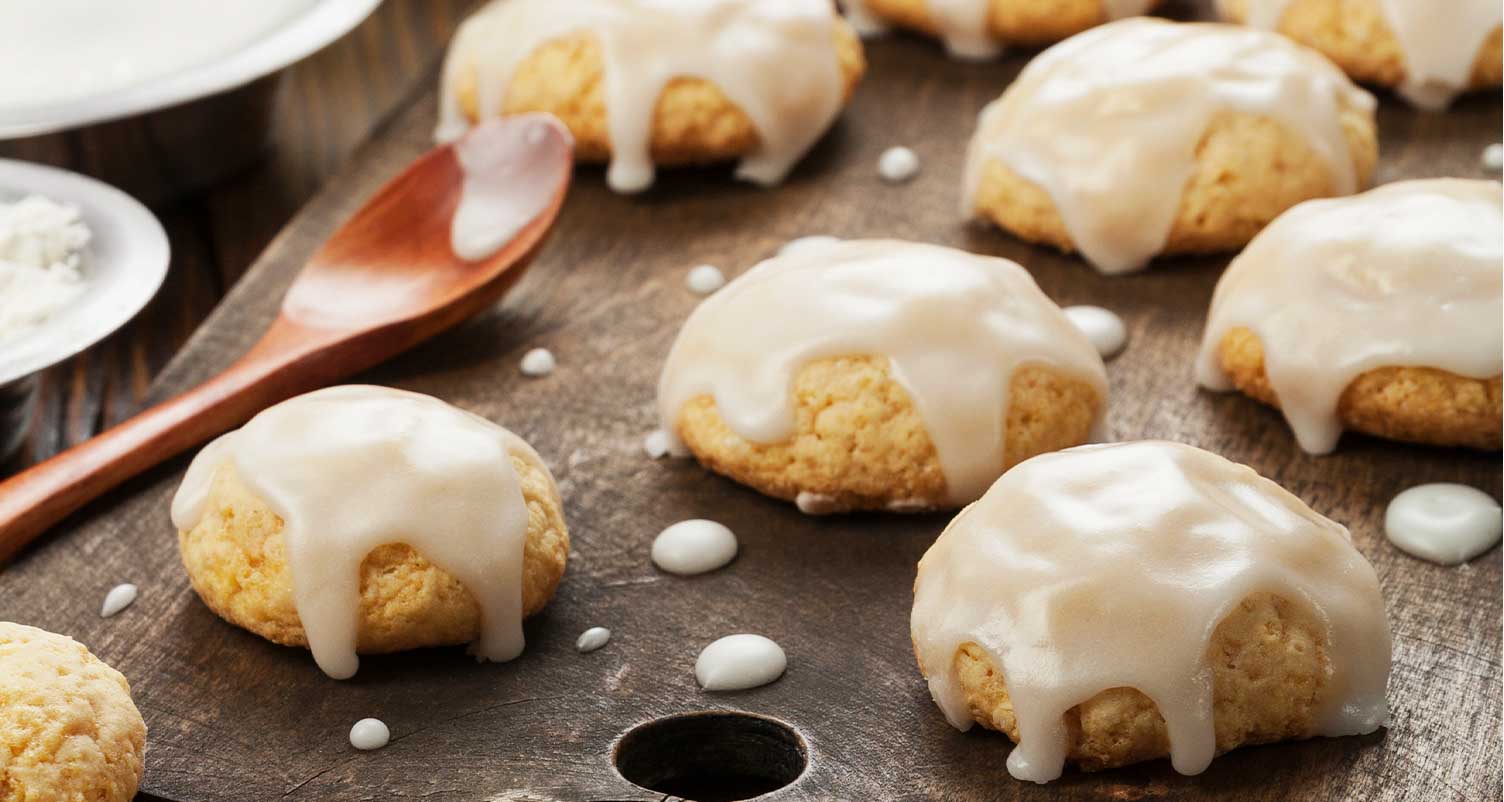Narrator:
Coming up on this episode of the doctor’s pharmacy.
Dr. Mark Hyman:
When you’re eating a lot of fructose, it takes a lot of energy in the gut and that actually causes the gut to weaken and become leaky. And then you get these holes in your intestine and that causes food and bacteria to leak in, causing inflammation throughout the body, which leads to heart disease, diabetes, obesity, cancer, Alzheimer’s, you name it.
Welcome to the Doctor’s Pharmacy. I’m Dr. Mark Hyman. That’s pharmacy with an F, a place for conversations that matter. And if you’re wondering what kind of junk food you shouldn’t eat, you’re going to like this podcast because we’re presenting a list of 14 different things that you should pay attention to when you’re deciding what to eat, that will keep you out of trouble. And it’s presented today as one of our health bites, little nuggets of health information that are going to keep you healthy by making small steps every day to change your life. And I hope it works for you. So listen, we know food is medicine, food is information, food is instructions, it’s code. It regulates every single aspect of your biology. It’s what you’re made of. It regulates your hormones, your immune system, your brain chemistry, your gene expression, your microbiome. I mean, literally everything that is going on inside you is regulated by food.
So if you’re putting the wrong information in, you’re going to get corrupted biological software. And we don’t want that because that drives disease. It drives not just disease, but it drives you feeling like crap. It drives you to actually have all sorts of weird symptoms that we don’t need to have, whether it’s just sluggishness, brain fog, digestive issues, pimples, whatever it is, you don’t need it because it’s often connected to food. And the quality of the food you eat matters more than anything else. And yes, we need protein, we need fats, we need carbs, we need vitamins, minerals, fiber, et cetera, phytochemicals. But how we eat them matters. How they’re constructed, which food shouldn’t be constructed. It’s just be food, right? It matters. And we’re going to talk about what I mean by that in a minute. But if you don’t actually have the right food, you’re not going to actually create the right biological instructions that tell your body what to do every minute, minute to minute.
So what do we need to know to stay out trouble? What foods do we need to eat and to avoid without getting all the bad stuff in? How do we avoid the danger zones in the grocery store, in our kitchen, in restaurants? And so for this sweet’s help bite, I’m going to walk you through what foods and ingredients are the most damaging to your health. And if you just avoid these things, it’s going to help you a lot. And you may know this, some might be obvious, but it’s worth the refresher and it’s good to sort of circle back. And I am amazed at sometimes eyeing into trouble. I think something’s healthy. I pick it out on the shelf. It’s a convenience food. It’s not always bad to have convenience foods. And I kind of pick it up, this sounds great on the front of the package, and then I kind of go with the ingredient list and I’m like, uhoh, and I put it back on the shelf.
So it’s really, really important to think about what you’re eating. There’s a big conversation now around ultra processed food and there’s a lot of data coming out around this concept of ultra processed food. And what does that exactly mean? It means food that’s deconstructed from its original form, basically pulverized. The molecular shape structure of the molecules are changed and it’s reassembled into things that look like food but aren’t actually food, and that actually make you sick and die faster. And I’m not just saying this, the data is really clear for every 10% of your diet that’s ultra processed food. Your risk of death goes up by 14% in one study that Kevin Hall did it. Then IH if you eat ultra processed food and you can have as much as you want versus healthy whole foods and you can do as much as you want. The people who are offered the ultra processed food, and this was the same group, just a crossover trial, actually a 500 calories more a day when they were allowed to eat ultra processed food.
Because it disregulates your biology in such a way that it turns off the satiety singles. It makes you feel like you need more. I always say people who are deficient and nutrients want to eat more because they’re looking for the nutrients. Your body is intelligent like that. Kids who are iron deficient will eat dirt to get iron. We eat more and more food to try to get the nutrients that are not in our food. So processing itself is not bad. We as human beings have been processing food forever. Cooking is a form of processing. Fermenting is a form of processing. Drying foods like dried strawberries or beef jerky is a processed food. Fermenting foods yogurt or sauerkraut is a processed food. That doesn’t mean it’s bad, but this stuff that’s been going on for thousands and thousands of years, we’ve processed olives to make olive oil.
That’s okay. But it’s really about these Franken foods that are not really food that are deconstructed from wheat, corn, and soy and the ingredients and things that you don’t even know where they’re coming from. If you say maltodextrin on the label, well, who’s got maltodextrin in their cabinet and eats that with their salad? Nobody knows what that is. That comes from corn, it comes from, well basically jimmo corn and it’s very full of chemicals and pesticides and it’s highly glycemic. And you get all these weird things like monoglycerides and what is that stuff? Well, it’s a kind of fat, but it’s extracted from soy and it’s processed in ways to create a mouth field that makes you want to eat more. And basically, actually there was an article came out, I think it was in Forbes a few days ago that talked about how the tobacco companies were actually food companies for a while.
It was RJR Nabisco, Philip Morris Kraft. So they kind of merged. And then when they owned those companies, when the tobacco companies owned the food companies, they actually re-engineered foods to make them more addictive just as they re-engineered cigarettes. And it was very nefarious. You really, it is not like just a bunch of conspiracy theory stuff. It’s actually very well documented. And this was well documented actually by Michael Moss in his book, salt Sugar and Fact, who was actually the first guest on the Doctor’s Pharmacy podcast, which you can go way back to episode one and listen to that if you want. So we need to make sure we’re eating foods that are processed in ways that we want to eat processed food. They’re good. For example, yesterday I had a can of mussel for lunch and it was basically water and mussels and I opened a can and it was a bpa, a free can because I made sure it was BPA, a free, which is a toxin that’s used to line cans, so it’s not terrible.
Or I had made a tomato sauce the night and I had a can of tomatoes. Those tomatoes, water and salt. That’s okay. But it’s really important to understand that having whole foods that are processed in ways that preserve them and maintain their nutritional value is okay. Frozen foods are actually okay because they’re processed, but they’re frozen, but they’re actually very nutrient dense. If you take berries, they’re actually much better if you get frozen berries than if you go to the store and buy ’em because they’re picked ripe and flash frozen. So they actually have much more nutritional value in some foods. So you want to get rid of all the food-like substances, all the industrial food. Michael Pollan said, don’t eat food that was made in a plant, eat food that was grown in a plant. So get rid of the food-like substances, the Franken foods, the chemicals add as preserved as food dies, artificial sweeteners.
There’s no reason we should be consuming these things. And we can argue, is artificial sweetener bad? Is it good? Does it cause cancer? Does it screw up your microbiome? Does it cause diabetes weight gain? And there’s scientists on both sides who will argue to the end of time about whether it’s good for you or bad for you. But basically in my view is eat real food that we know. That’s what we evolved with. We know that works and everything else, we may or may not find out it’s harmful, but increasingly we find out things are harmful after the fact. Crisco was invented in 1911. It wasn’t until 2005 that the, or was it 2015? No, I think it was 2005. I can’t remember. I’m old now, so I forget things. I got Alzheimer’s disease and basically it was a long time ago that they invented it, but it was almost a century before they actually said it’s going to kill you if you eat it.
But by the way, it’s still in food, believe it or not, because because of the way the food industry and the FDA are tied in together, there’s all these loopholes allowed them to still have it in the food. It’s sort of ruled as generally recognized as safe, which is called the grass. GRS. It was grass and a lot of things got grandfathered in, but they said it’s a non grass food, not generally recognized as safe. So it doesn’t mean it’s banned. Exactly. So it’s kind of a little weird thing. Anyway, let’s talk about the 14 foods to avoid for better health. And there could be 14, 15, a hundred, but we’re going to just kind of play with this a little bit today.
First of all, if you read something on a label and you don’t know what it is and you can’t pronounce it, don’t eat it. If it’s got butylated, hydroxy, toluene, boy, do you have that in your pantry? Is that something you sprinkle on your salad or on your sweet potato at night? Probably not, right? Butylated hydroxy and otherwise known as BHT is a known carcinogen that’s banned in most countries except the United States still in the food. So don’t eat stuff like that. It’s not a chemistry project. It’s food. If it says sterile lactate, that, is that something you have in your salt shaker to put on your tomatoes when you’re having a salad? No. So basically if you can’t pronounce it, don’t eat it. Second thing is what did people eat historically? And that’s probably a good bet from a traditional point of view about what you can eat.
If your grandmother wouldn’t recognize it as food, probably not good eat. Or probably these days it might be your great or great great grandmother, right? So do they know what Lunchables were or Go-Gurt or Pop-Tarts or Mountain Dew was probably not. So I think it is a really simple thing to think about. What did they eat? People say, oh, organic this and grass fed that. I have news for you folks. Everything. I mean, I’m old, right? So my grandparents were born in like eighteen ninety eight, nineteen hundred nineteen oh three, right? Everything they ate was organic. Everything they ate was grass fed. There wasn’t anything else. That’s all they had. There were no pesticides, herbicides, chemicals, fertilizers, all that stuff came after World War ii a little bit after World War I. So basically those things were not even around. So eat real food, eat whole food, eat unadulterated food, and that’s good.
We’re kind of moving back towards that next refined oils. These are controversial and there are many scientists who believe that these are helpful, that they lower the risk of heart disease. And I think we have to be very careful. The science is really mucky around nutrition. A lot of it’s population studies, A lot of it is trial clinical trials. But how they were designed, what foods were, what was included, what was not included really makes a difference. So there was a big study that actually wouldn’t be ethical today where they took 9,000 people who were committed to mental institutions and they split ’em into groups and half got butter and half got corn oil, which is an Omega six oil. They followed them for years and they found that, and this is actually an interesting story, they found that people had the corn oil, even though their LDL was lowered and their cholesterol was better than the people who had the butter and the saturated fat had a high risk of heart attack and death.
They did not publish a study because it contradicted their diet fat hypothesis. Ansel Keys, I’ve written about this in Eat Fat yet. Then they contradicted this hypothesis and they basically didn’t publish it. And there was an NIH scientist who knew about this study. It was quite a big study. It was like, why wouldn’t this published? He went and found the son of the original researcher and he said, Hey, do you know if there’s any data from this or where all the data is? And he said, well, gosh, I don’t know. My dad died recently and I think it might be in the basement. So he drove a hundred miles to go to his dad’s old house and he went in the basement and he found these old records and data and he hi it over to this guy and he published it a few years ago.
So I think we have to try to figure out what makes sense. Now, some of the oils like soybean oil is 10% of our calories. It’s industrial soy, it’s GMO soy, it’s spray wake glyphosate. You can argue that GMO is good or bad or whatever the actual plant that’s produced by GMOs, good or bad, but there’s no argument that glyphosate is bad. There’s just none. It’s not good for the soil, it’s not good for your microbiome. It may cause cancer and we’re eating in large quantities. It’s in most people’s urine. I tested mine. I thought I eat healthy, but I travel a lot, so I can’t always control what I’m eating. And basically I was in the 50th percentile for glyphosate, which is pretty freaky. I don’t like that and I’m trying to improve that, but it’s still, this is Roundup or what we call Roundup ready soybeans made by Monsanto.
The people who brought you dioxin, agent Orange and DDT, great company. Now, most people don’t even know that they’re eating it, right? It’s not like, oh, I’m taking soybean oil. But yeah, you can put it on your salad or you can cook with it, but most people are getting it in processed foods. It’s the main oil that’s industrial soy oil that’s used in processed foods. So you really want to stay away from that. It’s in fast food, grains, desserts, packaged snacks, muffins, potato chips. It’s actually in conventionally raised meat. It’s probably what they’re using when they cook in restaurants, cafeterias, diners. And so just stay away from that. Stay away from any of these refined oils. I always say better safe than sorry. There’s a lot of grayed fats out there, olive oil, avocado oil, nuts and seeds, oils, those are fine. Canola oil. And so oil have a mixture of omega six and omega three, which may offset some of the effects on the heart that the had, which was just omega six.
But I would definitely avoid all the omega six oils. And you can eat them, right? You can eat them from the raw food, they’re fine to have you need them, but not the massive quantities we’re having. I think it’s like 10% of our calories is a thousand fold increase in soybean oil intake in the last a hundred years. Okay, next is hydrogenated. Now, most soybean oil in foods is hydrogenated. They shouldn’t have changed it because of this grass ruling, but basically hydrogenated fats means they’ve chemically altered the fat. It’s a plant oil that is liquid at room temperature and they’ve injected it with hydrogen to bind to the fats, and it’s kind of a chemical thing. Saturated just means saturated with hydrogen atoms, right? Unsaturated means not as many or polyunsaturated, which maybe a lot unsaturated or monounsaturated, right? That’s what it means. And so they basically inject these hydrogen atoms into the plant to make it solid at room temperature and have properties like butter, right?
That’s what shortening is, but they call it shortening because it shortens your life basically. So you want to stay away from that. There’s no doubt, there’s no controversy, there’s no nutrition scientist, no professional association, no government that says that this is something we should be consuming anymore. It’s just a hard no. So I would say if there’s one hard and fast rule, make sure nothing you’re eating has hydrogenated fats in it and you have to read the ingredient list. You can’t just look at the front of the package. The next hard rule, I would say, and I heard this from Andy Wilde, he was one of my mentors, really amazing guy who sort of led the integrative medicine movement, and I heard him, I think on Larry King or something about diet and nutrition. It’s really simple. Just don’t eat anything with high fructose corn syrup or hydrogenated fats, and that’ll cure 90% of your dietary problems.
And I think he’s right. I mean, if you look at high fructose corn syrup, again, it’s one of those things, well, is it bad? How bad is it? Does it really cause a problem? It’s basically just sugar. And how is it different? And we can talk about that in a minute, but basically if it’s in a food, it means it’s a highly processed industrial food product. It’s not whole food. So just that alone just should make you put it back on yourself. Now, the high fructose corn syrup is basically, again, deconstructed food. They take the corn and they kind of process it with alkali. It actually has some mercury in it. Some of the ways they process it causes to have mercury. And there was actually a study on this, which was quite interesting. It was from colleagues of mine who called up the Archer Daniels Midland, who makes high fructose corn syrup.
And they said, Hey, can we have that of this? We want to study. And they’re like, oh, no, you can’t. It’s proprietary. They called up and they said, changed it in the story. They said, Hey, we’re starting a new beverage company. We want to use the real product. Can we try some? And they sent ’em a barrel of it and then immediately they tested it and they found it actually had fairly significant levels of mercury. But that’s not the real issue. The issue is it’s basically deconstructed. So in normal sugar, glucose and fructose are bound together in high fructose corn syrup. They’re not, they’re free and it’s free fructose. Now, it can be anywhere from 55% to 75% fructose. Now, fructose doesn’t raise your insulin levels or your blood sugar levels, but it does go into your body in a way that actually causes insulin resistance, causes inflammation, elevates uric acid, which is something that’s an important blood test to check.
And as I mentioned before on the podcast, I’m a co-founder of function health and function health.com, and it’s one of the tests we do as part of the function health panel to look at uric acid because it’s so important as an indicator of your overall diet quality and the level of this problem that can interfere with your metabolism and in many ways be very harmful. And my friend David Perlmutter wrote a book called Drop acid, and it doesn’t mean LSD, it means drop your uric acid. So that’s a deep dive, and there’s a scientist named Richard Johnson. He’s actually giving grand rounds at Cleveland Clinic soon who’s been a pioneer in this research, but it’s really not great for us. So the other thing is that it’s energy using. So in order to absorb fructose unlike glucose, it requires a lot more energy. And so when you’re eating a lot of fructose, it takes a lot of energy in the gut and that actually causes the gut to weaken and leaky and become leaky.
And then you get these holes in your intestine and that causes food and bacteria to leak in, causing inflammation throughout the body, which leads to heart disease, diabetes, obesity, cancer, Alzheimer’s, you name it, it’s really bad. So you don’t want to do that. Next is if you see an advertised on tv, probably bad for you. When did you see an ad for almonds or broccoli on television? Probably never. But the data is really interesting. On marketing, the worst foods for you have the most dollars spent on marketing and particularly television advertising. So basically don’t eat anything to advertise on tv. Also, if it has a health claim on the label, it’s bad for you likely. I saw a bag of potato chips recently and it said gluten free. Well, does that mean it’s healthy? No, I saw what, I saw a brownie at some concert I went to and I was like, no dairy, no gluten, no blah, blah, blah, whatever it was. And then I’m looking at the thing, it’s like, it’s so much sugar. And I’m like, this is not a health food. So basically, if it has a health claim on the label, don’t eat it. If it says lowers your cholesterol or high fiber or low fat or no added sugar or whatever the fricking thing is, I guarantee you it’s just covering up something that’s really bad for you. Also, just no brainer, don’t go to fast food restaurants. Just don’t.
I think a chicken nugget has, I don’t know, 27 or 37 ingredients and one of which is chicken. Just don’t eat that food. It’s made in ways that are really bad. In fact, a burger at McDonald’s is actually, I think only 50% beef and in the rest of it’s all this weird filler and stuff that we should be eating. Another thing you should pay attention to, which is used a lot, and there’s many names for this, so you have to be really diligent, and I’d encourage you to Google MSG and all the names for MSG or Monosodium glutamate. Now, this is an excitotoxin. This is something that glutamate is an important neurotransmitter that regulates something called NMDA receptors in the brain. And if you overstimulate these, it actually can lead to all kinds of brain issues and cognitive dysfunction. And many people get the Chinese restaurant headache, they get too much MSG in their food.
It can be called hydrolyzed vegetable protein, which might sounds good, or vegetable protein or natural flavorings even. Sounds great, right? It can be spices. So you don’t want to do that. Now, why? I mean you could say, oh, Dr. Hyman, you’re being extreme. What’s a little this or that or whatever, it’s not going to hurt you, but how do they actually induce obesity in lab rats when they want to study obesity? It’s very fascinating. They give them MSG because it makes them hungry and gain weight. Also, also, the most obese population in the world, and I learned this from a nutritionist who went and studied their diet and live with them in Samoan, and she found that they for breakfast had ramen noodles, I think sugar on top, and then MSG on top of that. So they put MSG on the ramen noodles as a way of flavoring them, but it really led to them being the most obese population in the world.
They like 90% diabetes rates. Also, if you’re looking at aerosol cans, there are certain spray cans that are okay, but aerosol is just bad for the environment. It’s bad for the ozone layer, and I wouldn’t eat it. Also, you have to be careful when you’re eating cheese. First of all, dairy is a problem in itself for many reasons. We have hybridized cows essentially where we breed them to create certain properties, but it’s led to high levels of something called a one casing in most modern dairy, which is inflammatory, but they’re often fed all kinds of weird things and they’re milked while they’re pregnant. There are lots of hormones. The modern dairy is really bad, but doesn’t say like goat cheese or sheep cheese or a two cows or heirloom cows can’t be okay for people who tolerate dairy and many people don’t. But there are many cheese like products out there like Veta cheese, maybe you remember that, or Kraft singles.
You know what they call it? Craft singles because they can’t call it cheese. Why? Because it’s not more than 51% cheese, and the government says you can’t call it cheese if it’s not got 51% cheese, so it has 51 or 2%. It could be a cheese like product, but it’s not cheese. So stay away from all that weird stuff. Also, artificial sweeteners, I’m going to take this one on, and we can talk a lot about this, but there are population studies that indicate that it increases obesity, diabetes, but those can be confounded because people who drink diet drinks maybe already overweight or prone to it and trying to lose weight. So there’s that. It does affect your microbiome, there’s no doubt about that from the research that can create inflammation, and we call metabolic endotoxemia, and that’s work out of Israel. And there’s many other studies on the microbiome.
I mean, I know when these first came out, someone gave me a chocolate bar. I said, there’s no sugar in this chocolate bar. And I was at work. I was like, I’m going to eat this chocolate bar. It’s like really yummy. And I was hungry, and I think I ate the whole thing, and it was a disaster. My friend Dave Asprey calls it disaster pants. It was kind of like that. So it has a huge effect on your microbiome. It causes fermentation, bloating, distension, and I would really encourage you all just to stay away from the sugar alcohols for that reason. The other things like saccharin or sucralose or aspartame, they’re usually in processed foods. They’re usually in poor quality foods. They’re usually in foods with very low nutrients. There can be in some things that are okay, but I think better stay away from them.
I think stevia may be all right, monk fruit may be all right. We’re still trying to figure that out. But I would really stay away from all the other artificial sweeteners. Also, anything that’s like funky additives, preservatives, dyes, weeded about two to pounds of these every year. I mean, this is crazy. I mean pounds of this stuff. So it’s a little bit, but actually when you add up all the processed food people eat, which is 60% of our diet, it’s literally pounds of this stuff every year. So you want to not eat that stuff. And in many countries, by the way, the things that we allow here are banned. We get stuff in this country that is kind of based on this kind of idea that you’re innocent until proven guilty, which is actually okay for law and for people, but not for food. You should have to prove safety before you actually introduce into the food supply.
So a lot of things got grandfathered in, whether it’s BHT or BPA or certain dyes and chemicals. We know that these are problematic, and I think I encourage you to eat ’em. And also just probably to eat food with not too many ingredients. If they’re all ingredients you recognize on a tomato, like tomato water, basil, oregano, salt, fine. But that’s a good rule. Although some things more than five ingredients are okay. I have recipes with obviously more than five ingredients, but it’s just like if it’s a processed food, just be very diligent. Learn how to read the labels. The nutrition facts is super confusing, but just turn the thing over and read the actual ingredients. Oh, this is an interesting thing I should just mention. I wrote about it in Food Fix. In most countries, they put the percent of the thing on the food ingredient label.
So it says like sugar, it’ll say 32%. In America, what they said is you have to put the ingredients in the order of the amount, which, okay, that’s fine. But what food companies do then is they’ll, instead of saying sugar is the number one ingredient, they’ll put in five different kinds of sugar. They’ll put in brown sugar, brown rice sugar or white sugar, corn syrup, this and that, and it adds up being the most sugar is the predominant ingredient, but since it’s broken down to these five different types of sugar, it actually doesn’t look like that. So be really smart about it and just stay away from all that crap. So I know it seems like a lot, but it is really simple. Just don’t eat processed, ultra processed food. Don’t eat high fructose corn syrup. Don’t have hydrogen fats. Don’t eat things you can’t pronounce or ingredients you don’t recognize and don’t eat things your great-grandmother probably wouldn’t eat, and you’ll be fine.
I’ve written a lot about this. You can check out my book, the Pegan Diet Food. What the heck should I eat my PBS show? Eat Your Medicine. It’s great. It helps you walk through this, walk you through how to do a kitchen makeover each you what to avoid, and in each category of food, what to eat. So in dairy or meat or whatever I put in like, okay, this could be okay, but this definitely don’t eat this, right? So it’s very, very, I think, helpful and practical and hope you enjoyed this. So that’s it for today’s Health Bite. Be sure to share this podcast with your friends and family. Leave a comment, how have you noticed your health improve as you’ve avoided these processed foods? What other kind of tips and good hacks have you come up with to stay safe in the grocery store, the restaurant in the kitchen? And we’d love to hear from you. We’ll see you next week on The Doctor’s Pharmacy.
Narrator:
I hope you enjoyed this week’s episode. Just a reminder that this podcast is for educational purposes only. This podcast is not a substitute for professional care by a doctor or other qualified medical professional. This podcast is provided on the understanding that it does not constitute medical or professional advice or services. If you’re looking for help in your journey, seek out a qualified medical practitioner. If you’re looking for a functional medicine practitioner, you can visit ifm.org and search their find a practitioner database. It’s important you have someone in your corner who’s trained, who’s a licensed healthcare practitioner, and can help you make changes, especially when it comes to your health.

